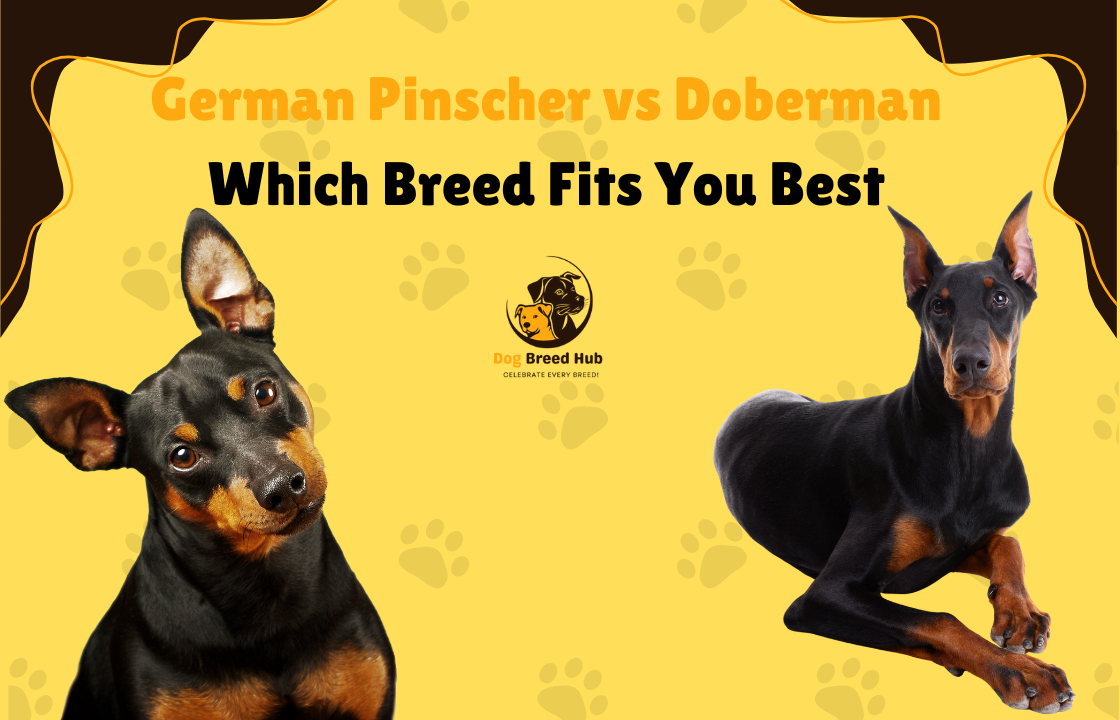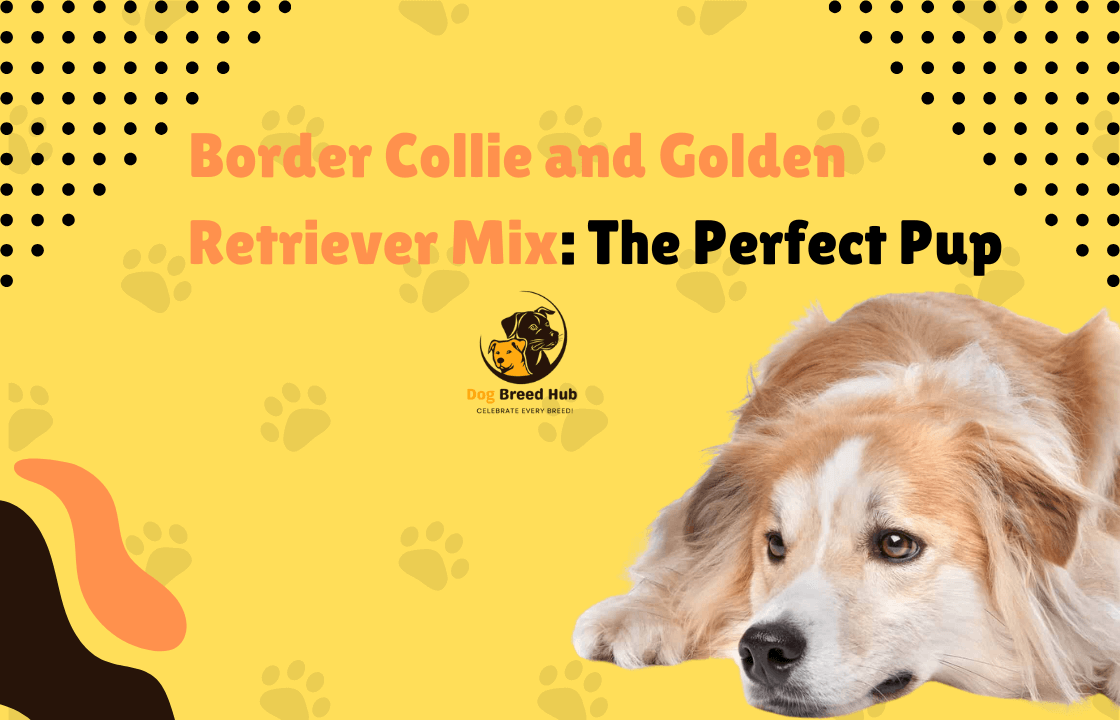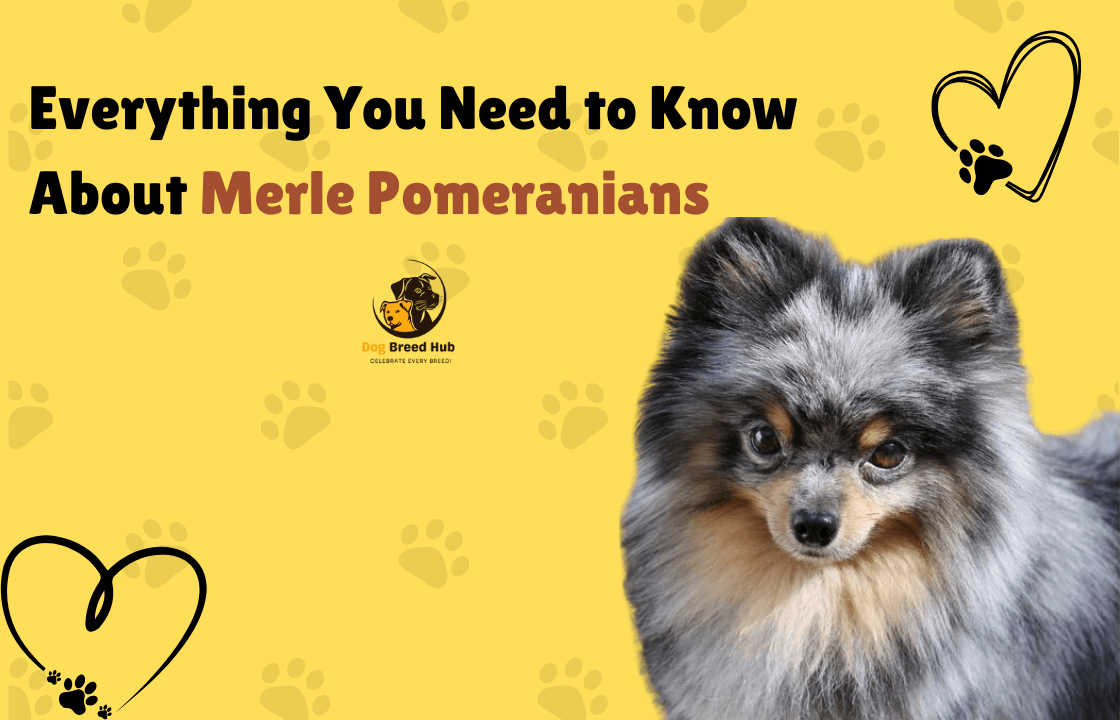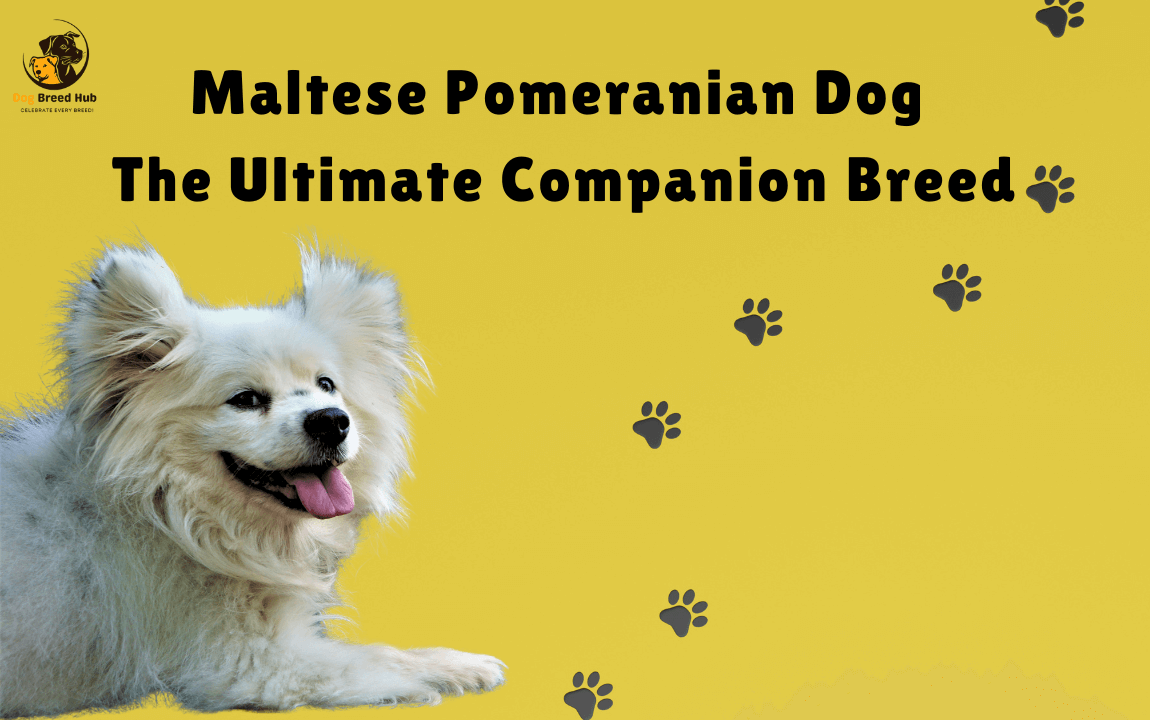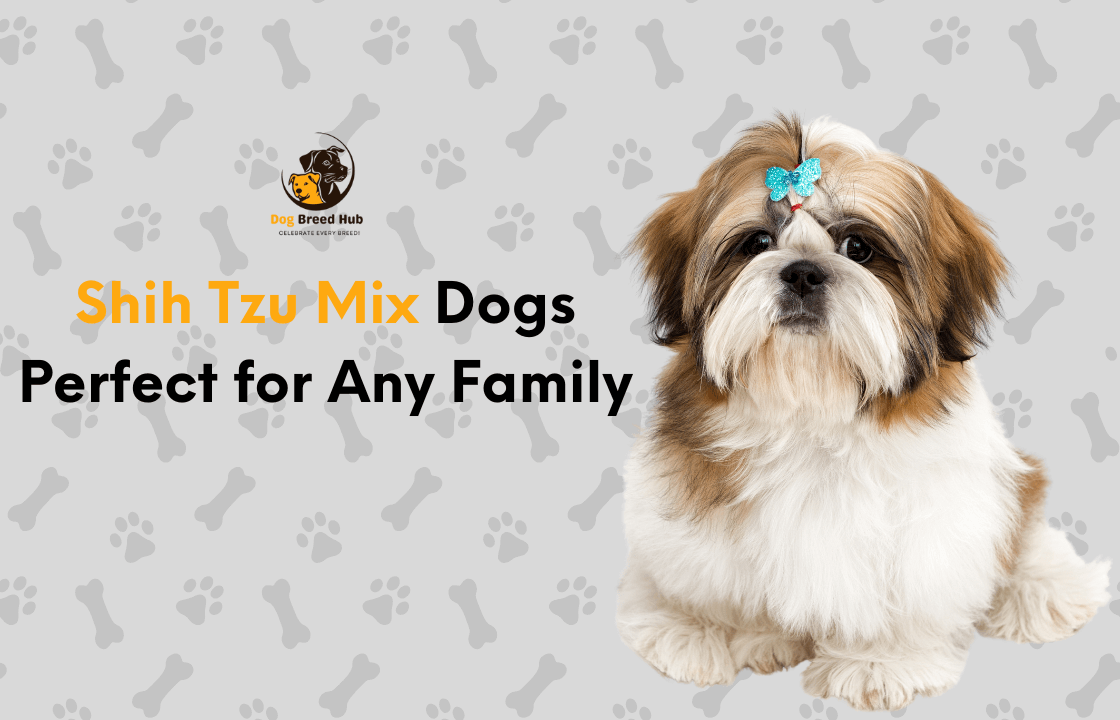Table of Content
Choosing between a German Pinscher and a Doberman can be a bit tricky. Both breeds are incredible, but they have their differences. If you’re thinking about bringing one of these dogs into your home, it’s important to know what each breed offers. German Pinschers are smaller and full of energy, while Dobermans are larger and often seen as protectors. Let’s dig into what makes these breeds unique and see which one might be the right fit for you.
Key Takeaways
German Pinschers are smaller and more energetic compared to Dobermans.
Dobermans are known for their protective nature and loyalty.
Both breeds require regular exercise, but Dobermans need more intense activity.
German Pinschers adapt well to families, while Dobermans need more structured training.
Choosing between the two depends on your lifestyle, space, and commitment level.
Understanding the German Pinscher and Doberman Breeds
When it comes to the German Pinscher vs Doberman debate, it’s essential to understand the key differences between these two breeds. While they share some similarities, there are distinct characteristics that set them apart.
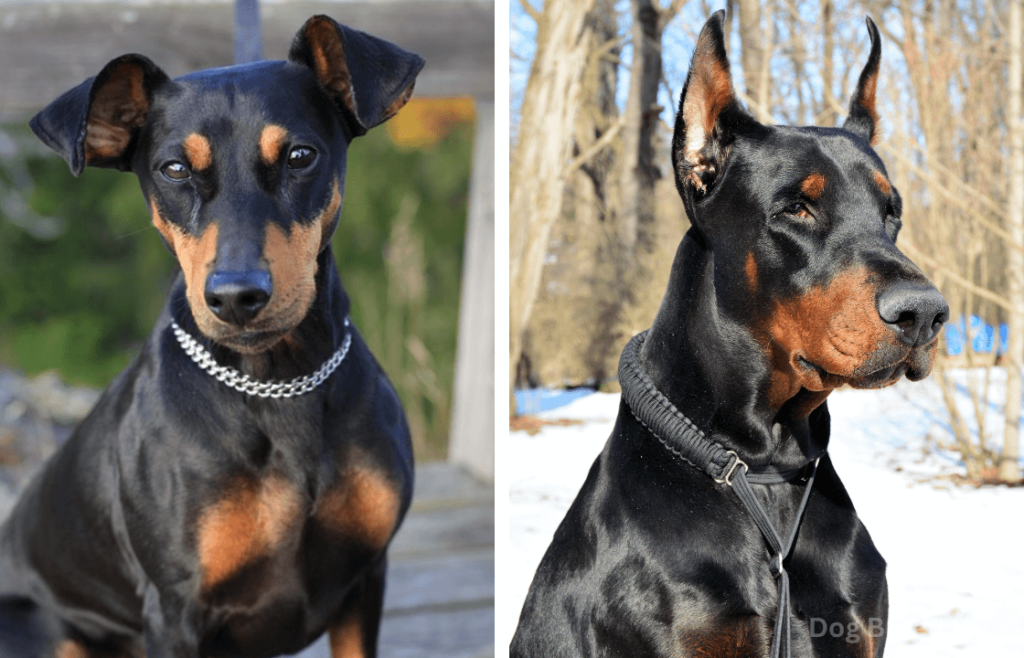
Breed Origins and History
The German Pinscher and Doberman Pinscher have intriguing histories that reflect their roles and characteristics. The German Pinscher, hailing from Germany, was originally bred for vermin control. Its agility and intelligence made it a fantastic hunter, keeping homes and farms free from pests. On the other hand, the Doberman Pinscher, also from Germany, was developed by a tax collector named Karl Friedrich Louis Dobermann in the late 19th century. This breed was designed to be a loyal guardian, offering protection with its strength and intelligence. While both breeds share German roots, their purposes diverged, shaping their unique traits today.
Physical Characteristics and Appearance
When comparing the Doberman’s and German Pinscher’s physical traits, size is a notable difference. Dobermans are larger, standing up to 28 inches tall, while German Pinschers are more compact, usually around 20 inches. Here’s a quick comparison:
Feature | German Pinscher | Doberman |
|---|---|---|
Height | 17-20 inches | 24-28 inches |
Weight | 25-45 pounds | 60-100 pounds |
Coat Colors | Black, blue, fawn, red | Black-and-tan, red |
Body Shape | Compact, agile | Muscular, broad |
Both breeds boast sleek, short coats, but their color variations and body structures make them distinct. The German Pinscher’s appearance is refined and agile, while the Doberman’s is imposing and powerful.
Temperament and Personality Traits
The German Pinscher and Doberman Pinscher have distinct personalities suited to different lifestyles. German Pinschers are lively, intelligent, and affectionate, making them great companions for active families. They are playful yet protective, often thriving in environments where they can engage in outdoor activities. Conversely, Dobermans are known for their loyalty and protective nature. They excel as both family pets and working dogs, thanks to their intelligence and eagerness to please.
Dobermans require a firm hand in training and are ideal for those who can provide structured environments. Their natural guarding instincts make them excellent protectors, but this means they need more socialization to ensure they are well-adjusted. Meanwhile, German Pinschers, with their spirited and adaptable nature, fit well into family life, though they also benefit from consistent training to manage their strong-willed tendencies.
Choosing between these breeds depends on your lifestyle and needs. If you want a smaller, energetic dog, the German Pinscher might be your match. For those seeking a larger, protective companion, the Doberman could be the ideal choice.
Lifestyle Compatibility: German Pinscher vs Doberman
Exercise and Activity Requirements
When comparing the exercise needs of the German Pinscher vs Doberman, it’s clear that both breeds are active, but they differ in intensity. German Pinschers, being smaller and more agile, enjoy a spirited play session or a brisk walk. They’re perfect for families who love outdoor activities but might not have hours to dedicate to dog exercise daily. On the other hand, Dobermans are athletic powerhouses. They require more rigorous exercise routines to channel their energy positively. If you have a large yard or enjoy running, a Doberman might be your ideal companion.
Alertness and Vigilance
Both breeds are highly alert and quick to sound the alarm. The German Pinscher, known for its keen senses, excels at detecting potential threats. Dobermans, while equally vigilant, may have a slight edge due to their enhanced size and strength.
Space and Living Conditions
Space is another critical factor in the German Pinscher vs Doberman debate. German Pinschers adapt well to apartment living, provided they get enough exercise and mental stimulation. They’re compact and nimble, making them suitable for smaller spaces. Dobermans, however, thrive in homes with ample space. Their larger size and energetic nature mean they need room to move around. A house with a yard is more suitable for a Doberman, ensuring they have enough space to stretch their legs and explore.
Family and Social Compatibility
Both breeds have unique traits that make them suitable for different family dynamics. German Pinschers are known for their playful and friendly demeanor, making them great companions for families with children. They are protective but not overly aggressive, striking a balance between playfulness and loyalty. Dobermans, in contrast, are renowned for their protective instincts. They form deep bonds with their family members and are excellent guard dogs. However, they require more socialization and training to fit seamlessly into a family setting.
Choosing between a German Pinscher and a Doberman often boils down to your lifestyle and living conditions. While both breeds offer loyalty and companionship, your decision should reflect your space, activity level, and family needs.
In the broader context of guard dog breeds, the German Pinscher and Doberman both have their strengths. Whether you’re considering a Doberman Pinscher vs German Shepherd or exploring the differences between a German Doberman Pinscher vs American Doberman Pinscher, understanding your lifestyle compatibility with these breeds is crucial. The choice between the German Pinscher vs Miniature Pinscher vs Doberman can be challenging, but aligning their traits with your lifestyle will guide you to the perfect furry friend.
Training and Socialization Needs
Training Techniques for German Pinschers
Training a German Pinscher can be quite the adventure! These dogs are smart, sometimes a bit too smart for their own good, and they definitely need a firm but fair training approach. Start with basic obedience when they’re young, focusing on commands like “sit,” “stay,” and “come.”
Consistency is key with these guys, so make sure everyone in the family is on the same page about the rules. Positive reinforcement works wonders—think treats, praise, and playtime as rewards.
Begin training early to establish good habits.
Use positive reinforcement methods, such as treats and praise.
Keep sessions short and engaging to hold their attention.
Training Techniques for Dobermans
Dobermans are known for their intelligence and eagerness to learn, but they can also be a bit stubborn. They thrive on structure and discipline, so clear commands and consistent routines are essential. Early socialization is important to help them feel comfortable around strangers and in new environments. Incorporate mental stimulation through puzzle toys and agility courses to keep their minds sharp.
Implement a mix of positive reinforcement and clear, firm direction.
Engage them with interactive games and obedience drills.
Socialize early to ensure they remain calm around strangers.
Socialization Tips for Both Breeds
Both German Pinschers and Dobermans benefit greatly from early socialization. Expose them to a variety of people, places, and other animals to build their confidence and reduce any fear or aggression. It’s important to make these experiences positive and rewarding. Regular playdates with other dogs can also help them learn appropriate social behaviors.
Introduce them to different environments and people gradually.
Encourage positive interactions with other dogs and animals.
Use rewards to reinforce good behavior during socialization.
Training and socializing your German Pinscher or Doberman is an ongoing process that requires patience and dedication. But with the right approach, you’ll have a well-behaved and happy companion by your side.
Additionally, training and socialization from a young age are crucial for German Pinschers to prevent unwanted behaviors and enhance their sociability.
Health and Maintenance Considerations
Common Health Issues in German Pinschers
German Pinschers, like many breeds, have their share of health concerns. They are generally healthy, but owners should be aware of potential issues. Hip dysplasia is one condition that can affect these dogs, leading to discomfort and mobility challenges. Another concern is von Willebrand’s disease, a bleeding disorder that can complicate surgeries or injuries. Eye problems, such as cataracts or progressive retinal atrophy, may also occur. Regular vet check-ups and genetic testing can be helpful in identifying these issues early.
Common Health Issues in Dobermans
Doberman Pinschers typically live for 10 to 12 years, but they are prone to certain health conditions that owners should monitor. Dilated cardiomyopathy (DCM), a heart condition, is notably prevalent and can be life-threatening. Additionally, Dobermans are at risk for gastric dilatation-volvulus, commonly known as bloat, which requires immediate medical attention. Other health concerns include hypothyroidism, Wobbler syndrome, and various cancers. Maintaining a healthy lifestyle and regular vet visits are crucial for their well-being.
Grooming and Care Requirements
Both breeds have relatively easy grooming needs, thanks to their short coats. A weekly brush should suffice to keep their coats shiny and healthy. Bathing them once a month or as needed can help maintain cleanliness. It’s important to check their ears regularly for signs of infection and to keep their nails trimmed to prevent discomfort. Regular dental care is also essential to avoid periodontal disease.
Keeping your German Pinscher or Doberman healthy involves a mix of regular exercise, a balanced diet, and consistent veterinary care. With the right attention and preventive measures, these breeds can lead happy, healthy lives.
Making the Right Choice: Which Breed Fits You Best?
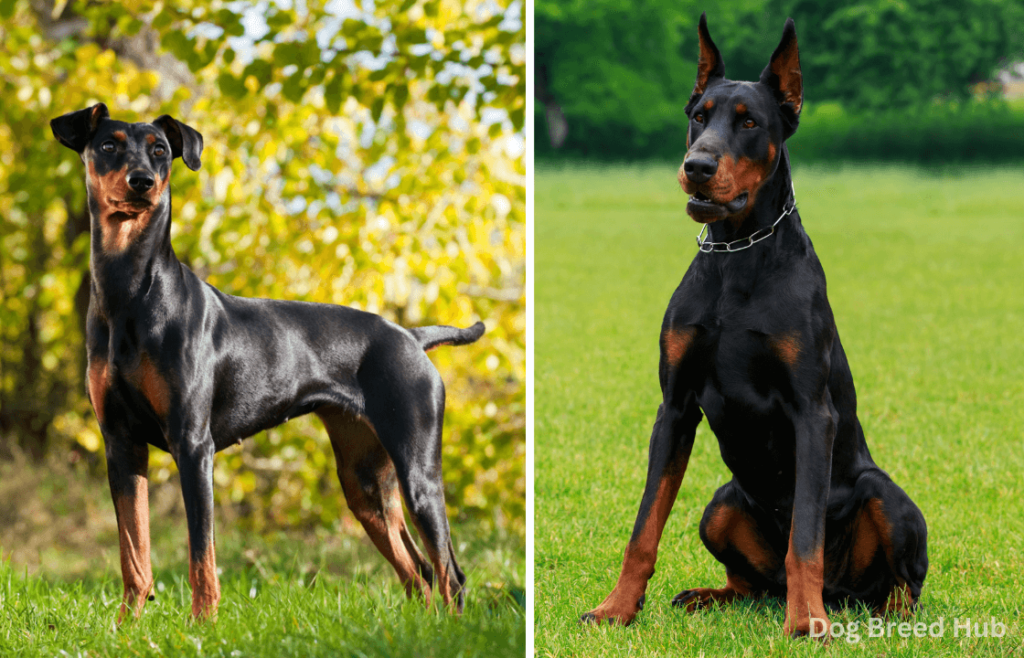
Assessing Your Lifestyle and Needs
Choosing between a German Pinscher and a Doberman is like picking the perfect pair of shoes; it needs to fit your lifestyle. Think about your daily routine. Are you someone who enjoys long walks or runs, or do you prefer a more laid-back lifestyle? Dobermans require a lot of exercise and thrive in active homes, while German Pinschers, though energetic, are a bit more adaptable to quieter routines. Consider your living space too. Dobermans, with their larger size, need more room to roam, while a German Pinscher can be comfortable in a smaller space.
Evaluating Long-term Commitment
Bringing a dog into your life is not just a weekend project; it’s a long-term commitment. Dobermans are known for their loyalty and protective nature, which means they’ll need consistent training and socialization. On the flip side, German Pinschers are spirited and alert, requiring regular mental stimulation and engagement. Ask yourself, are you ready to invest the time and energy needed for training and companionship over the years?
Choosing Between Protection and Companionship
When it comes to choosing between these two breeds, consider what you want in a dog. If you’re looking for a strong, protective companion, a Doberman might be your best bet. They are excellent guard dogs and have a deep sense of loyalty. On the other hand, if you want a lively and adaptable family dog, the German Pinscher could be a great match. They are friendly and fit well into family settings.
“Ultimately, the right choice depends on what you value more—a protective, larger breed or a smaller, spirited companion ready to join family adventures.”
Here’s a quick comparison to help you decide:
Feature | German Pinscher | Doberman |
|---|---|---|
Size | Medium | Large |
Energy Level | High | Very High |
Space Needs | Moderate | High |
Training Needs | Moderate | High |
Protective Nature | Moderate | Very High |
Before making your decision, consider these factors carefully. Both breeds have their unique charms, and understanding your own needs will guide you to the right choice. Remember, whether it’s a German Pinscher or a Doberman, the bond you build will be a rewarding journey.
For more insights on the American and European Doberman Pinschers, consider how their temperaments and appearances might align with your lifestyle and needs.
Visual and Physical Differences
Size and Build Comparison
When it comes to comparing the German Pinscher and Doberman, size is one of the most noticeable differences. Dobermans are significantly larger, standing up to 28 inches tall, while German Pinschers typically reach about 20 inches. This size difference is not just about height; it also reflects in their overall build. Dobermans are muscular and broad, giving them a powerful and imposing appearance. In contrast, German Pinschers are more compact and agile, which makes them look sleek and refined.
Here’s a quick comparison table for clarity:
Feature | German Pinscher | Doberman |
|---|---|---|
Height | 17-20 inches | 24-28 inches |
Weight | 25-45 pounds | 60-100 pounds |
Body Shape | Compact, agile | Muscular, broad |
Leg Length | Proportionate to body | Longer, enhancing stride |
Chest | Less pronounced | Broad, deep |
Overall Look | Sleek and refined | Powerful and imposing |
Coat and Color Variations
Both breeds have sleek, short coats, but their color options set them apart. Dobermans are often seen in black-and-tan or red, while German Pinschers can be black, blue, fawn, or red. These variations add a unique touch to each breed’s appearance, making them visually distinct.
Here’s a breakdown of their coat and color features:
Aspect | German Pinscher | Doberman |
|---|---|---|
Coat Texture | Short and smooth | Short and smooth |
Color Options | Black, blue, fawn, red | Black-and-tan, red |
Facial Structure | Less defined snout | Pronounced, defined snout |
Eye Shape | Almond-shaped, lively | Medium, alert |
Nose Color | Matches coat color | Black or brown |
Tail Length | Shortened in some cases | Typically docked |
Ear Type | Floppy, may be cropped | Often cropped for a sharp look |
Distinctive Features and Traits
The differences extend beyond size and color. German Pinschers are known for their agility and compact build, making them excellent for activities requiring quick movements. Dobermans, on the other hand, are bred for strength and protection, often having a more pronounced snout and longer legs, which enhance their stride.
Purpose-built Traits:
German Pinschers were originally bred for vermin control, which is reflected in their agility and keen sense of movement.
Dobermans are renowned as guard dogs, with their strength and loyalty being key traits.
It’s fascinating how two breeds that share a common ancestry can develop such distinct physical characteristics and purposes. Whether you’re drawn to the German Pinscher’s agility or the Doberman’s imposing presence, each breed offers something unique for potential dog owners.
Conclusion
So, when it comes down to choosing between the German Pinscher and the Doberman, it really boils down to what you’re looking for in a dog. The German Pinscher vs Doberman debate is all about matching the right breed to your lifestyle. If you want a smaller, energetic companion that fits well in a lively home, the German Pinscher might be your pick. On the flip side, if you’re after a larger, protective buddy that thrives on structure and exercise, the Doberman could be your best bet. Both breeds bring their own charm and challenges, so think about your space, time, and what you want in a dog.
Whether it’s the German Pinscher vs Doberman Pinscher, or even comparing them to other breeds like the German Shepherd or Miniature Pinscher, it’s all about finding the right fit for you. Remember, both breeds are loyal and loving, just in their own unique ways. So, take your time, consider your needs, and you’ll find the perfect furry friend to join your family.
Reamore: Is an Australian Shepherd Unicellular or Multicellular Explained
Frequently Asked Questions
German Pinschers are smaller and less intense than Dobermans. Dobermans are larger, stronger, and better suited for guarding.
German Pinschers tend to adapt well to family life. Dobermans can also be great but need more training and socialization.
Dobermans are highly trainable but need a firm hand. German Pinschers are intelligent, though less focused on obedience.
Dobermans require more intense exercise than German Pinschers. Both breeds enjoy active play but differ in endurance.
Both breeds are affectionate but express it differently. Dobermans tend to bond deeply, while German Pinschers are playful.
Consider your lifestyle, space, and activity level. Dobermans need more space and exercise, while German Pinschers are more adaptable to different living conditions.

I am a dog lover and a veteran pet writer who writes about the intricacies of dog behavior, health, and dog training. My articles are dedicated to improving the bond between dogs and their owners by sharing practical tips and touching tales. Come join me as I explore the world of dogs and their behavior and needs.

